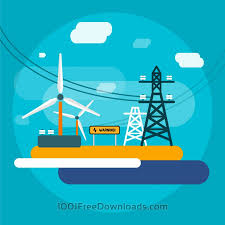

The UK’s economy is built on the principal of markets being competitive. What's more, because of the way the energy companies are structured, they buy and trade the energy between each other. The main issue with just six firms providing the vast majority of the UK with energy is the potential for this dominance to result in uncompetitive tariffs and high energy bills. What are the dangers of an energy market dominated by six suppliers? In 2023, you could therefore identify a "big seven" based on market share:īut with Shell's imminent departure, we will be back down to a big six, with Octopus and OVO replacing npower and SSE. The biggest of these was Bulb, which had 1.3 million customers but remains in operation under administration until a long-term solution for its financial struggles can be found. Since then, though, the energy market crisis which has dominated news cycles since September 2021 has seen a huge amount of smaller energy suppliers, which were under-equipped to deal with the challenges of increases in the cost of wholesale energy, go bust. The chart below demonstrates this (in terms of electricity suppliers) - look out for OVO taking over SSE's customer base towards the end of the timeline. This means that, since the early 2000s, the energy market has undergone significant change in terms of which suppliers have dominated market share. That's without mentioning the rise in popularity of companies like Octopus which, while not rising to the customer numbers of OVO, are steadily growing as customers take advantage of attractive introductory offers and reasonably-priced tariffs. It's expected this process could take until 2024 to be completed. However, in the summer of 2023, Shell announced it would be selling its domestic energy business in the UK and exiting the market.

With the weight of one of the world's most recognisable and powerful companies behind it, Shell Energy had emerged as a legitimate competitor to the current dominant suppliers. Meanwhile, First Utility, one of the more prominent challenger energy brands, was acquired by Shell and renamed Shell Energy. This left British Gas, EDF Energy, E.ON Next, OVO and ScottishPower as five of the biggest suppliers in the country. In December 2019, SSE announced that it had reached an agreement with OVO for the latter company to acquire its customer portfolio.Īdditionally, in 2021, npower agreed a deal to move its customer base to E.ON, which shifted all of its customers to a new sub-brand called E.ON Next. However, there are a huge number of smaller suppliers gaining a greater foothold in the UK, and they are not only having an influence on the number of customers the big six supply, but they are also redefining what the big six are.

At the height of their influence, these companies supplied seven out of 10 British households with gas and electricity. Traditionally, they are made up of British Gas, EDF Energy, E.ON, npower, ScottishPower and SSE. The ‘big six’ is a term often used to describe the six largest energy companies operating in the UK.


 0 kommentar(er)
0 kommentar(er)
